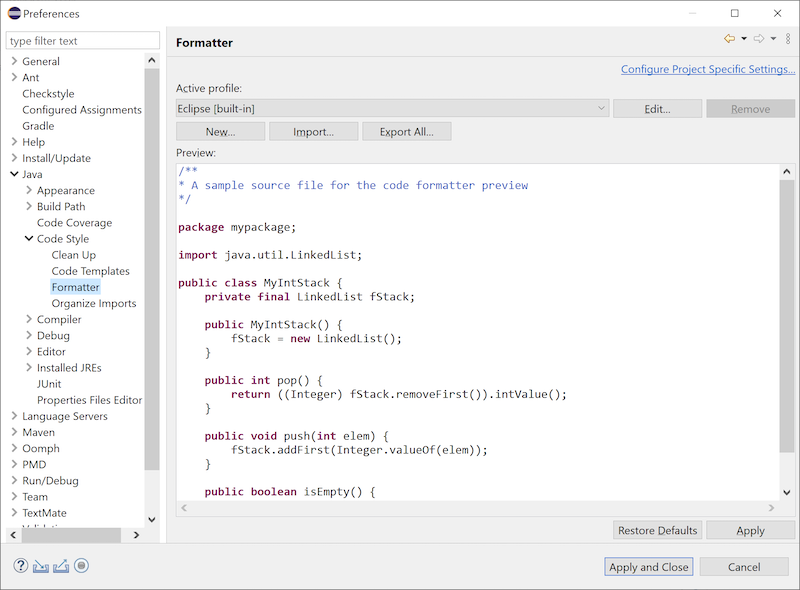0.1. Getting Your Programming Environment Setup¶
0.1.1. Downloading and Installing Eclipse¶
This course teaches programming using Java. We will use the Eclipse integrated development environment (commonly called an IDE) for code development in class, including all examples shown. The instructions here include the user libraries necessary for assignments in this course, and programming assignments will not compile without these.
Note: this setup involves a lot of steps and it’s not uncommon for students to miss something in their first time through. If you’ve installed everything, but can’t get any code to run at all, it’s good to try uninstalling Eclipse and just installing it again.
2. Select the Eclipse download from the yellow/orange download button (select the 64bit or 32bit version to correspond to the version of the JDK you installed, please be aware: versions may change by semester).
3. Download the distribution and follow installation instructions, selecting IDE for Java Developers when prompted.
4. Start Eclipse. ( If you are on a Mac, you need to set System Preferences->Security and Privacy to allow apps downloaded from locations other than the Mac App Store.)
5. The first time you start Eclipse, you’ll be asked to specify a location for the Eclipse Workspace; this is where Eclipse will keep your programming projects. You can either use the default recommendation or place it elsewhere on your file system. Check Use this as the default and do not ask again so that Eclipse will not ask you every time you start it, and click OK.
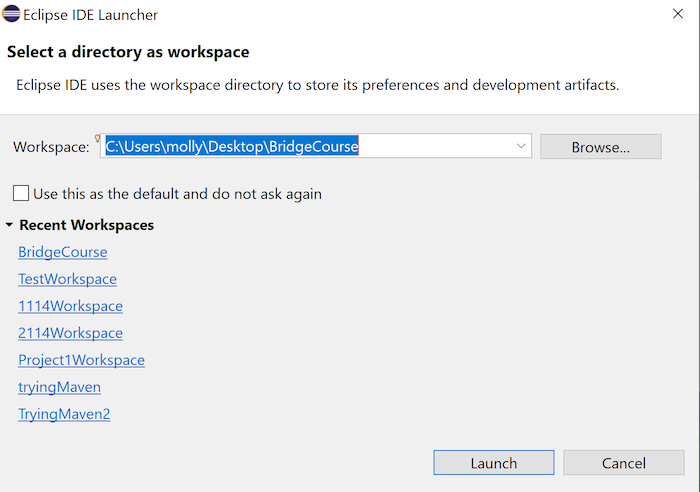
You may see a notice about a requirement needing an update. Click the checkbox Remember my Decision then select Install.
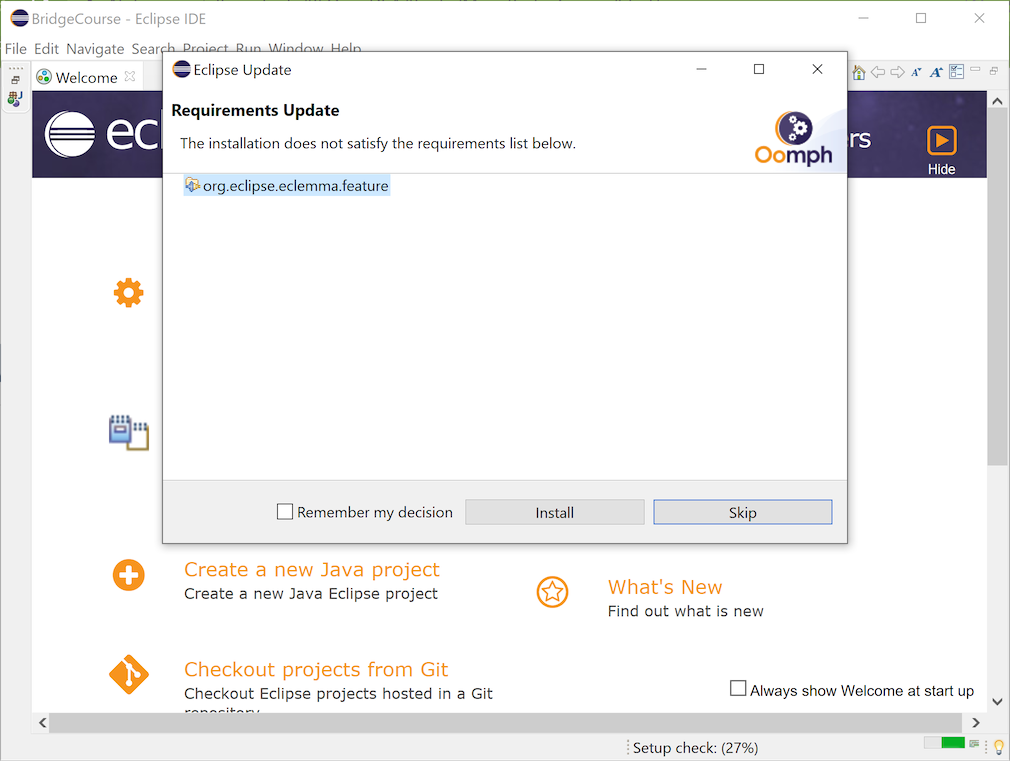
6. The initial Eclipse startup screen has a Welcome tab with an Overview, Tutorials, Samples, and a “What’s New” section.
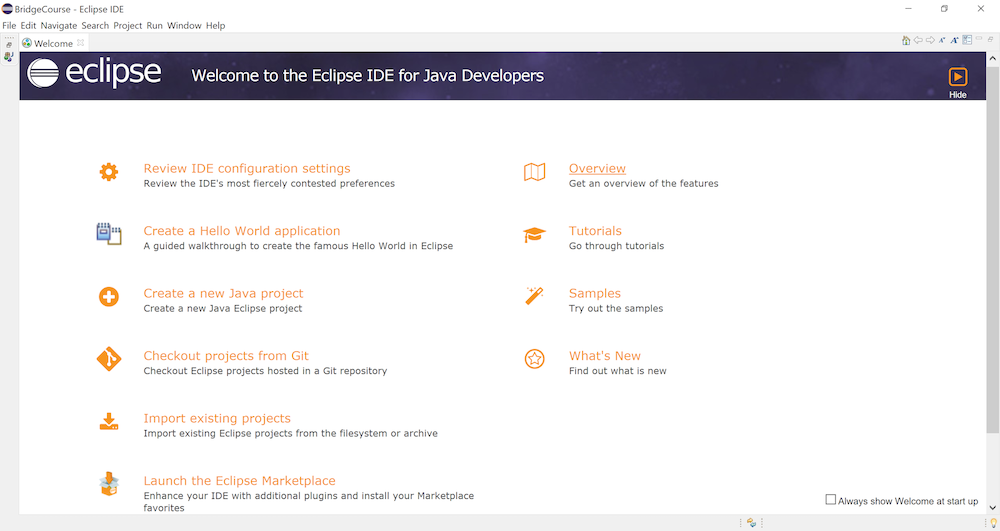
Feel free to explorethe options and then proceed to the Workbench.
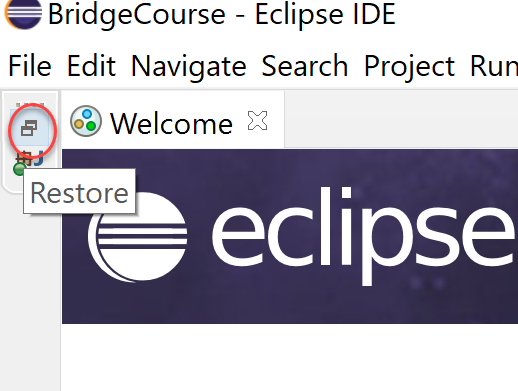
7. Once you’re at the Workbench, you should consider cleaning it up to start. It is suggested you minimize the Task List and Outline Views on of the Eclipse workbench. You can also close out the welcome tab if you want. It may look differently on your screen, but the following image shows the tabs that we recommend you close.
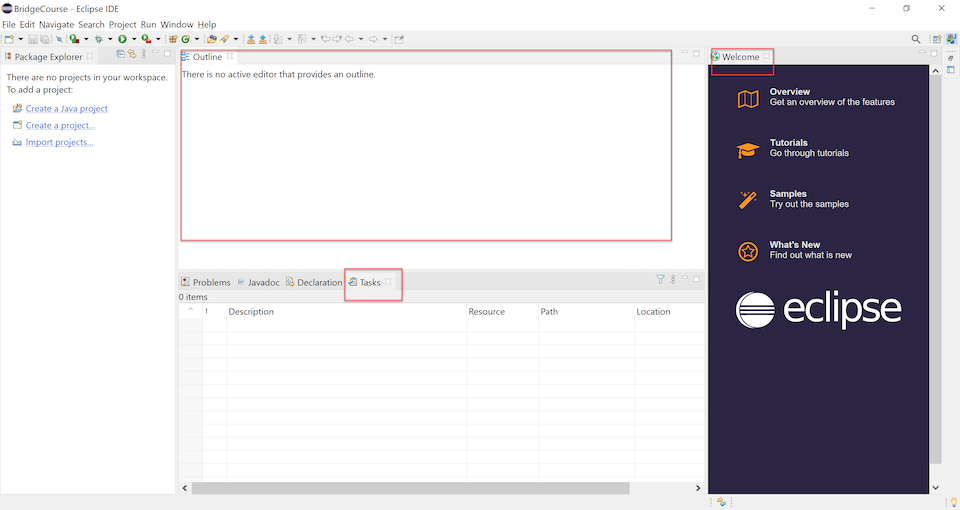
Don’t worry if you close something unintentionally! You can always restore these windows by going to Window > Show View.
0.1.2. Configuring Eclipse¶
0.1.2.1. Installing the Webcat Plugin¶
Now we need to install an additional plug-in to make some common tasks in this course easier.
Open the Help menu and select Install New Software….
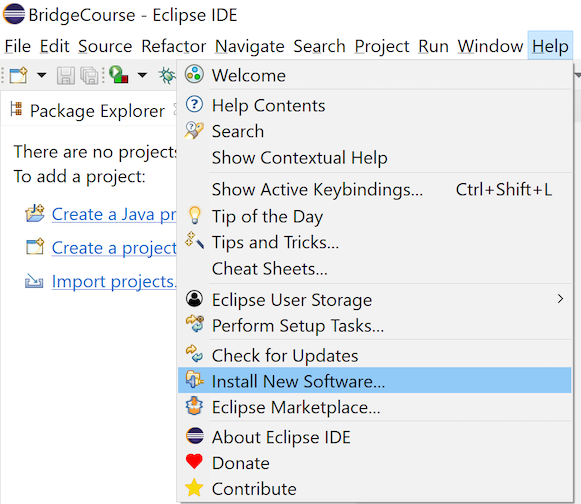
2. In the Work with: field, paste the following URL and press Enter (or press “Add”): http://web-cat.org/eclipse

3. Click the check boxes next to “Web-CAT Electronic Assignments” and “Web-CAT Java Development Extras”, and click Next.

Review your selection and click Next again.
If the Install Remediation Page appears, then select the second radio button “Update my installation to be compatible with the items being installed”.
4. Check “I accept the terms of the license agreements” and then click Finish.
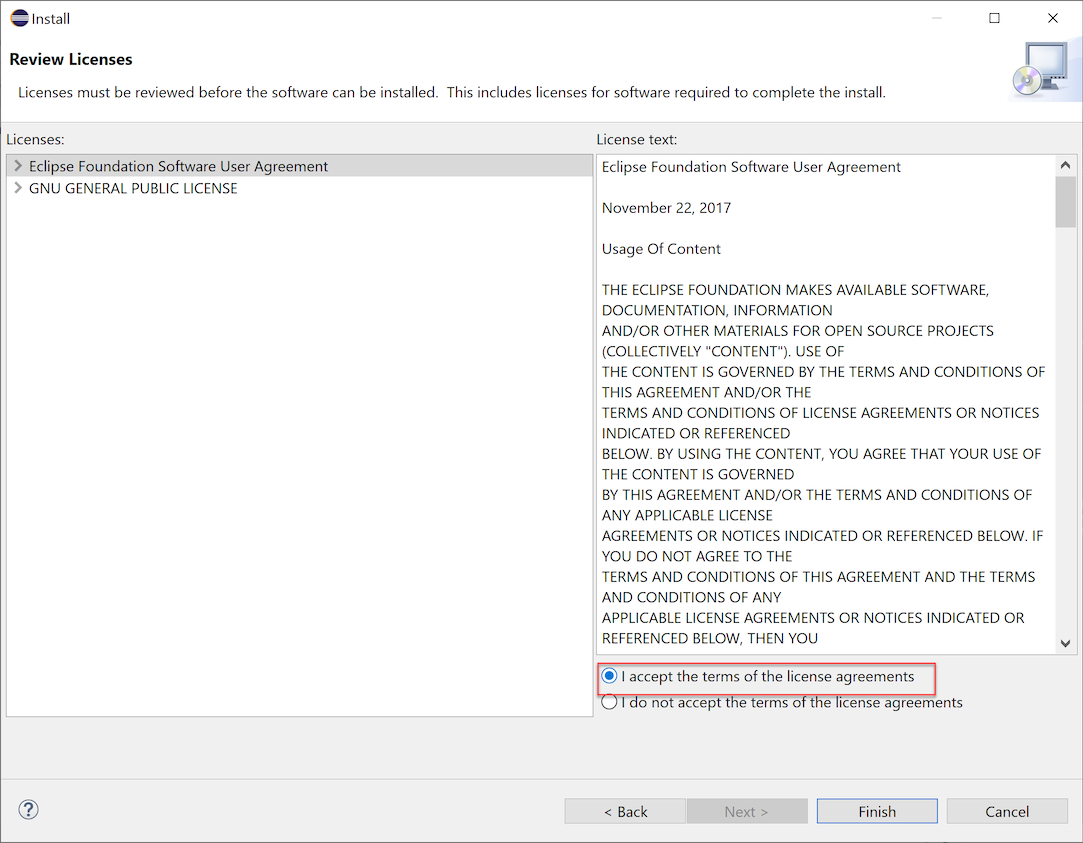
5. Wait while the plug-in is being downloaded and installed; this may take a few minutes. You may get a warning about installing unsigned code during the installation. Click OK (or “Install anyway”) to continue the installation.

6. When the installation is complete, Eclipse will notify you that it should be restarted in order for the changes to take effect. Click Yes to do so.
0.1.2.2. Formatting support¶
0.1.2.2.1. Installing Formatting Support¶
Before you can begin working on class assignments, you need to configure a couple settings in Eclipse’s preferences.
1. Once Eclipse has restarted, select “Window > Preferences…” (or on Mac OS X, “Eclipse > Preferences…”) from the menu.
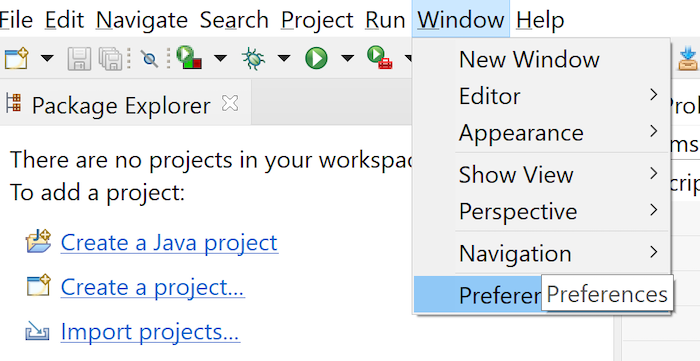
Click “Configured Assignments” from the left panel
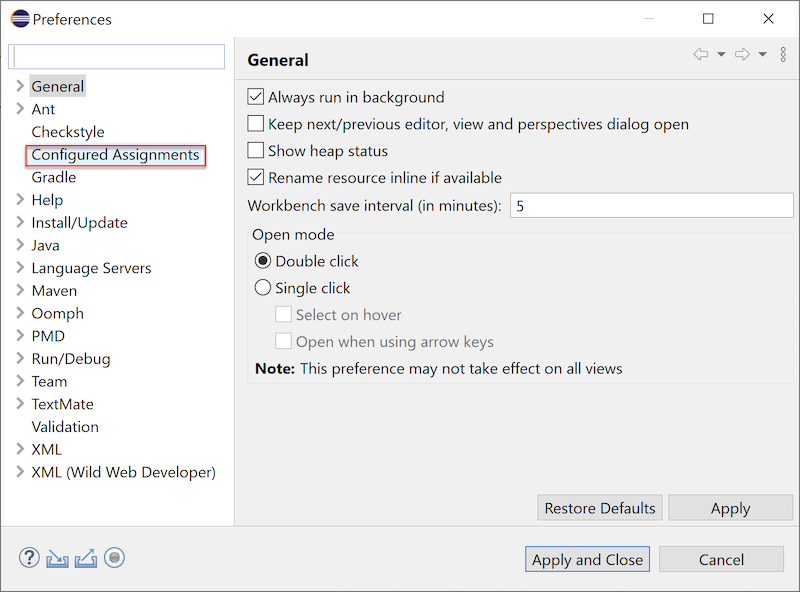
Copy and paste the following two URLs into the panel. (If the line gets wrapped, make sure you don’t accidentally put any spaces in it.)
Click “Apply and close” to save your changes and exit the preferences window.
0.1.2.2.2. Setting up Formatting¶
One of the formatting guidelines expected throughout this course is to use spaces instead of tabs in your code. This makes your code more portable between users and environments.
You will need to download and import this style sheet into Eclipse for formatting spaces/tabs, indentation, etc. Once it is imported, you may press CTRL + SHIFT + F within Eclipse to format your code (if using Windows) or Command + Shift + F (if using Mac).
Remember to format your code before submitting to Web-CAT.
Download the following XML file by going to the link: vtcsstyle.xml
On Windows, you’ll need to Right Click and select Save As. It doesn’t matter where you save it, but do remember where it is saved
To install:
Mac:
Eclipse->Preferences->Java->Code Style->Formatter->import the above file, then click ok
Windows:
Window->Preferences->Java->Code Style->Formatter->import the above file, then click ok
This is an image of setting up on Windows
